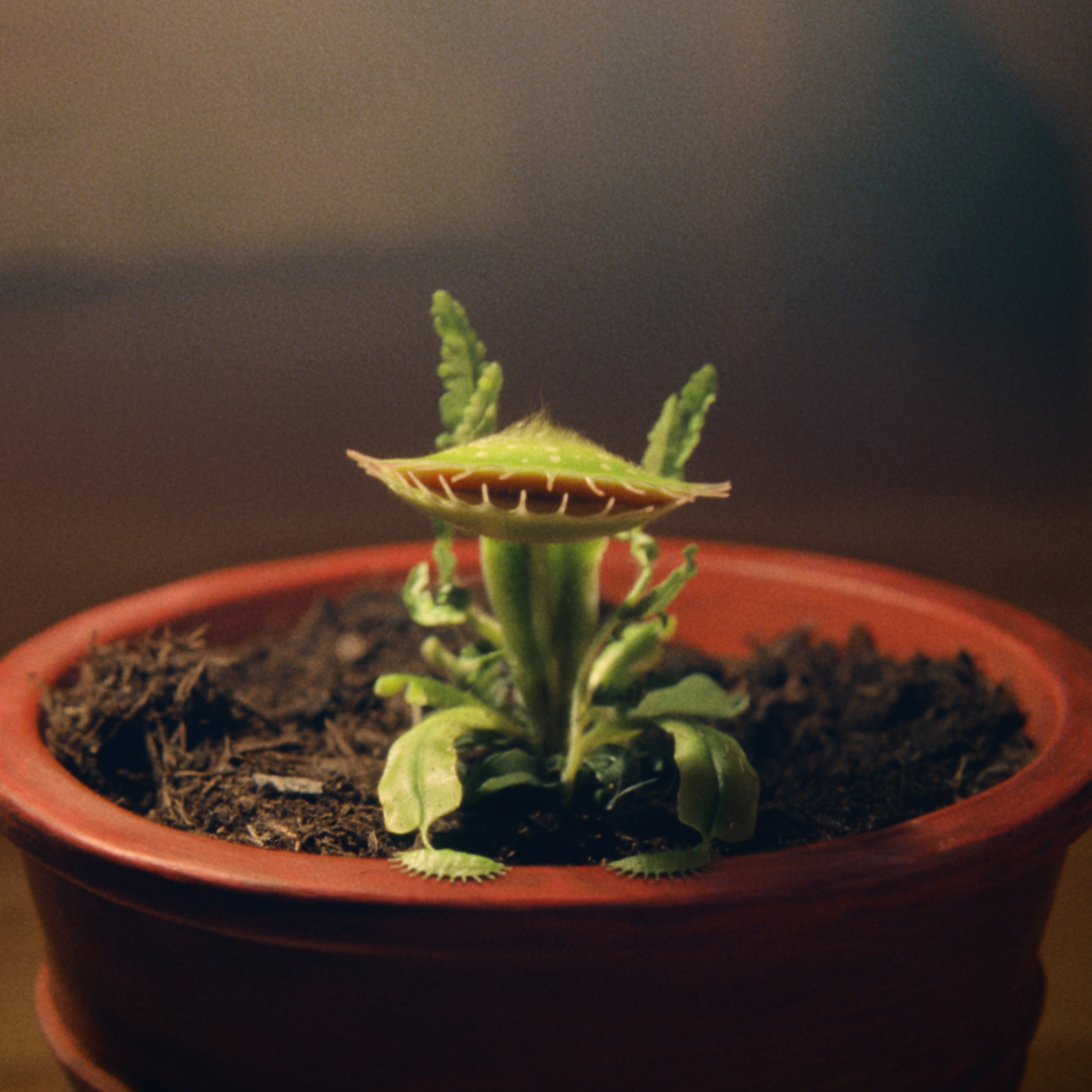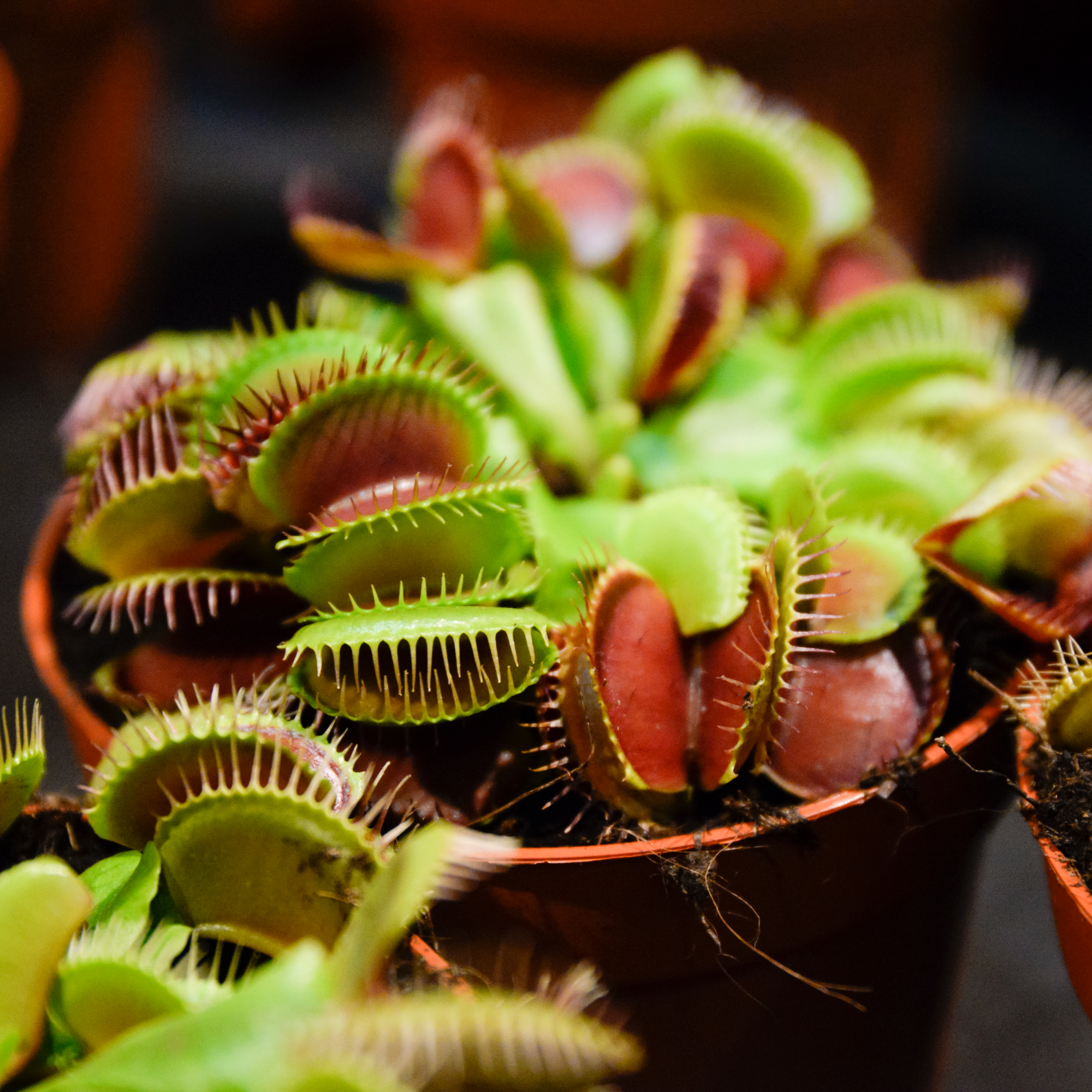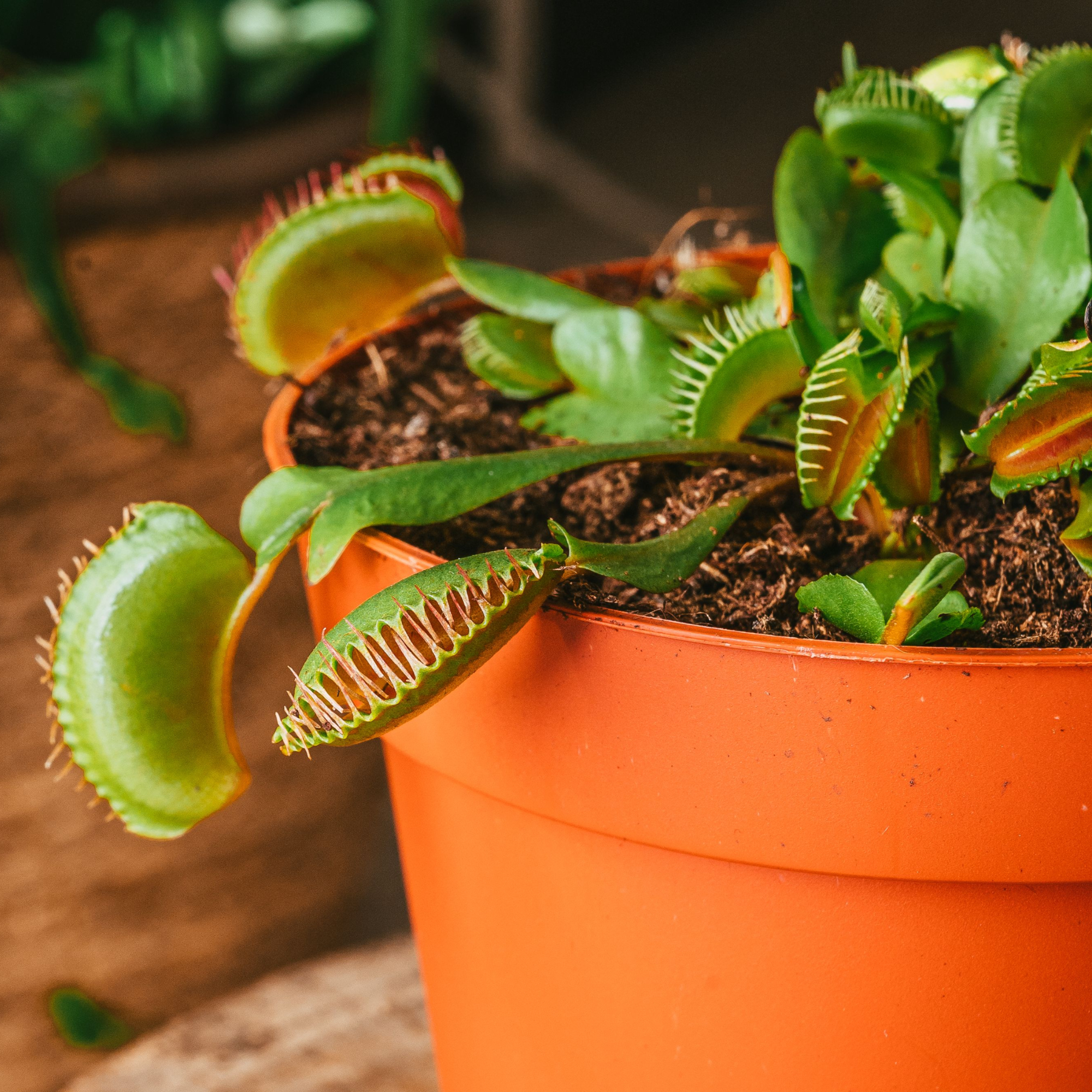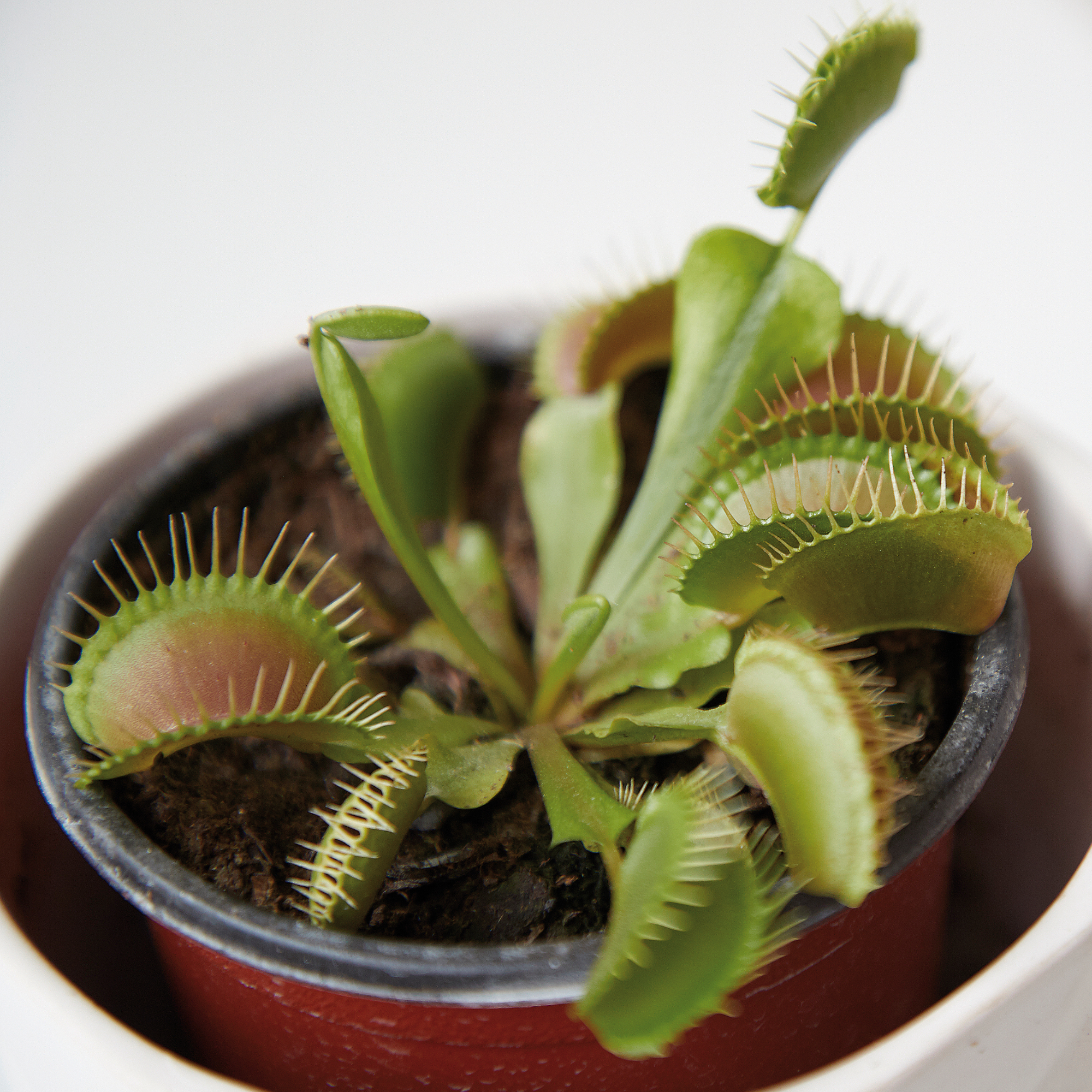
Caring for a Venus flytrap is likely a thought you'd never think would cross your mind in the endless sea of garden ideas this season amidst the many alternative winter flowers you could be focusing on nurturing now.
However, following the release of this year's much-anticipated John Lewis Christmas advert starring Snapper, Venus flytraps are pretty much inescapable. In an unexpected twist, it appears as though the carnivorous plant might just be the (albeit unconventional) mascot of the festive season.
In fact, online garden centre, Gardening Express, reports that within just an hour of the Little Shop of Horrors-inspired advert going live, the carnivorous plant had sold out. They have confirmed a record demand for Venus flytraps, with sales soaring and Google searches only continuing to grow as we speak.
Therefore, it only makes sense that we cover the bases of caring for a Venus flytrap, should you wish to bring your very own 'Snapper' into your home this Christmas.

Tips for caring for a Venus flytrap
'The Venus flytrap (Dionaea muscipula) is a unique houseplant known for its carnivorous, jaw-like leaves that snap shut when insects land on them,' starts Patty Willems, PR manager of sustainable plant pot company, elho.
'Not only are they great for natural pest control around the home, they are also relatively easy to care for.'
1. Bright sunlight
'When deciding where to keep your plant, it's important to bear in mind that the Venus flytrap needs around 4-6 hours of sunlight a day so it's worth keeping it on a sunny windowsill,' advises Chris Bonnett, founder of Gardening Express.
Patty adds, 'A good way to tell if your Venus fly trap is getting enough light is to peer into their jaws and if the inside isn't pink or the leaves on the plant look spindly and long, it needs to be moved to a brighter place and given more light.'
Therefore, consider ensuring that wherever you've decided to start cultivating a windowsill garden, whether it be for growing veggies or keeping potted plants, is generous with sunlight.

2. Ensure the soil stays moist
'When caring for your Venus flytrap, you'll want to ensure that the soil stays moist,' advises Chris.
'Once it begins to feel dry you should water it with rainwater or distilled water. Try to avoid tap water which could contain salt build-up that will be harmful to your plant.'
Considering the wet weather we've been having recently, watering your Venus flytrap could be a key way for you to use grey water.
Alternatively, if you've joined the dehumidifier train and nabbed your pick of the best dehumidifier to help combat damp in your home, you could even use dehumidifier water to water your plants.

3. Consider humidity and temperature
Following on from the last point, Patty notes, 'They thrive in poor, acidic soil that remains damp and moist, but still has good drainage, and they prefer a humid and warm environment.'
'The optimal temperature is usually above 20 degrees Celsius and in a room with good air circulation.' Chris notes that the maximum temperature you should leave your Venus flytrap is around 35 degrees Celsius.
'At night, try to find a place in your home where the temperature doesn't drop too dramatically. Ideally, you'll want the plant to stay somewhere above 10 degrees,' he says.

4. Keep your hands to yourself
'Although it can be tempting to encourage the plant to close its "mouth" by putting a finger on the leaves, it is best not to,' warns Patty. 'Each jaw-like set of leaves can only close so many times, so triggering them unnecessarily will ultimately cause the plant to die sooner.'
So, just like the much-loved John Lewis advert, it's best to keep our hands to ourselves unless you want to get snapped.
FAQs
Where can I buy a Venus flytrap?
You can likely buy Venus flytraps from garden centres as well as online. Here are some retailers we recommend checking out so you can nurture your own 'Snapper' in the comfort of your home.
Crocus: Venus flytrap, from £7.49
Gardening Express: Venus flytrap, £5.99
Waitrose: Venus flytrap, from £7.99
What does a Venus flytrap eat?
Venus flytraps eat insects, making them great for natural pest control around the home.
Why do Venus flytraps eat insects?
'Venus flytraps are carnivores and require insects for nutrients to help them thrive,' exp;ains Patty Willems at elho.
'The plant emits a sweet liquid similar to the nectar found in flowers which attracts insects, and the jaws will slowly close around the unsuspecting prey! It can take a Venus fly trap up to three weeks to digest the insect, and the trap will remain closed until it has fully been digested.'
Are Venus flytraps hard to take care of?
Surprisingly, no. Venus flytraps are actually relatively easy plants to take care of, provided you keep the above tips and tricks we shared in mind.
Chris at Gardening Express concludes, 'People seem really divided over the [John Lewis] advert this year but from a horticulturist point of view it's amazing to see that the ad is inspiring more people to bring plants indoors this season along with their festive fur.'
'It's definitely going to be the must-have Christmas plant this year.'







